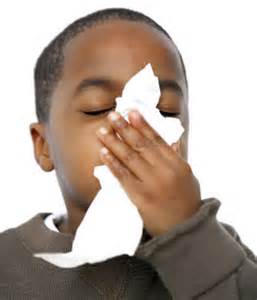It’s just about fall and for many kids, that means the return of child allergies season. While some people have allergies year-round, others have their symptoms seasonally based on what is floating in the air. In the fall, the most common cause of allergy symptoms is ragweed.
Below is a list of symptoms that may be from allergies:
- Sneezing
- Congestion
- Itchy, watery eyes
- Cough due to post-nasal drip
- Runny nose
The doctor may look on physical exam for certain signs of allergies:
- Dark circles under the eyes
- A crease on the nose called the allergic salute (from pressing on the nose)
- Pale color inside the nose
So you think your child has allergies, now what? There are several over-the-counter antihistamine medications that block the reaction in allergies. These include Claritin, Zyrtec and Benadryl. Your child’s pediatrician may prescribe an inhaled nasal steroid to block symptoms in the nose. These medications include Flonase, Nasonex, and Rhinocort. For severely allergic patients, an allergist can use allergy shots.
There are many things you can do at home to reduce exposure to allergens (the part of the weed or pollen that causes allergy symptoms). Try keeping the window closed in your child’s bedroom. This will keep airborne allergens from floating in. Furthermore, have a “no shoe” policy at home because your shoes track in a large amount of the allergens that are present in the home, as well as heavy metals and germs. Finally, use a vacuum cleaner with a HEPA filter. This filter traps allergens and keeps them from being re-released into the air.
Keep in mind that many patients with allergies also have asthma, and having allergy symptoms is a common trigger of asthma symptoms. Make sure to schedule an asthma/allergy visit with your pediatrician to be sure your child is protected as he/she heads back to school.
For more information, talk to your child’s doctor.



